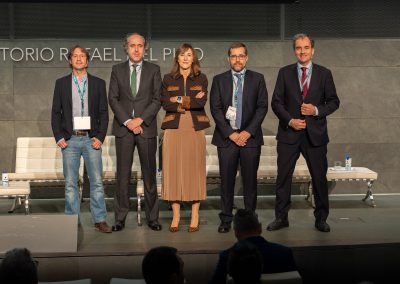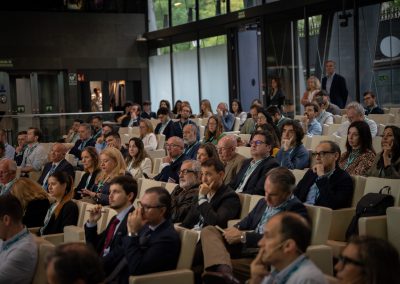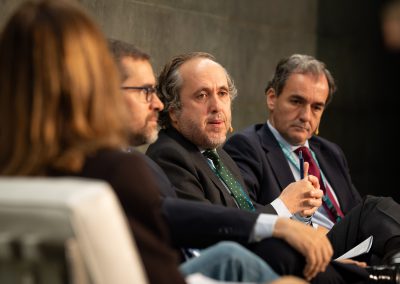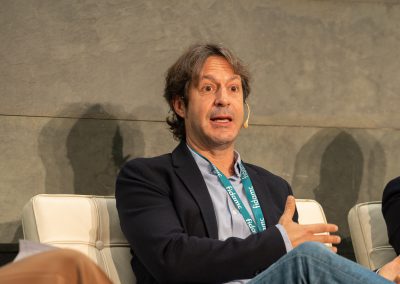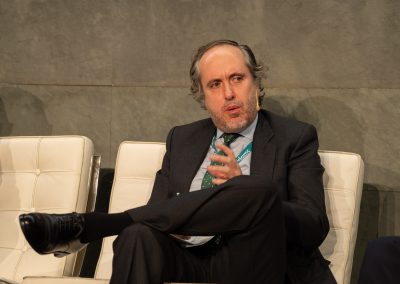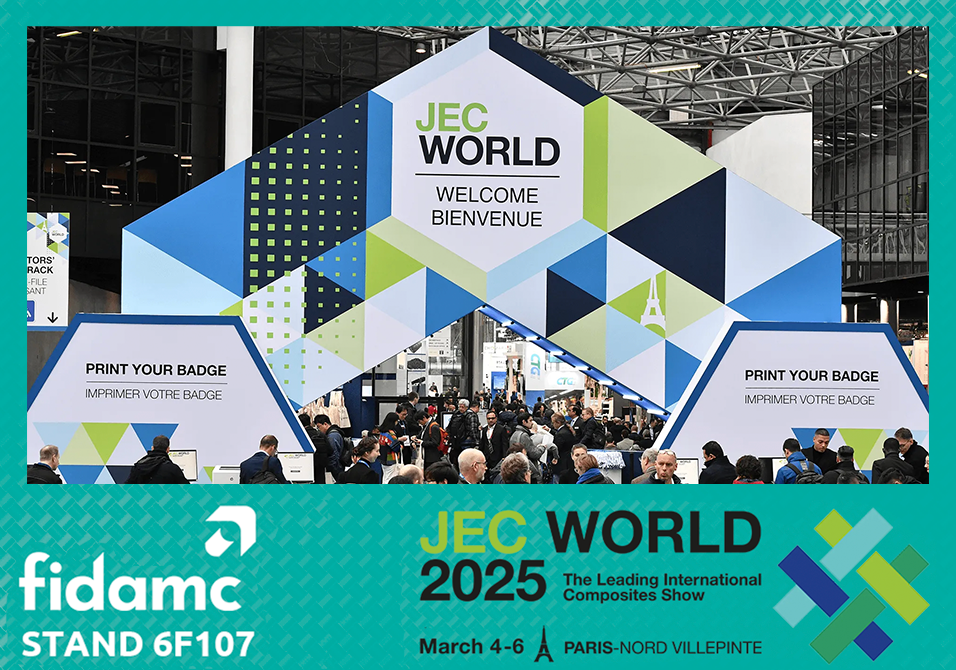The first round table of the Aerospace Thermoplastics International Summit, organised by Fidamc, opened the event with a reflection on Spain's aerospace strategy and the funding opportunities that will shape the future of the sector. Under the title "Aerospace strategy and funding opportunities", the round table brought together leading institutional and business representatives: Juan Francisco Reyes (Horizon Europe NCP – CDTI), José Javier Martín Cañizares (Regional Government of Andalusia), Jaume Marcos (President of PAE) and Héctor Guerrero Ministry of Science, Innovation and Universities), moderated by Silvia Lazcano, independent advisor and expert in innovation and aeronautics.
From the outset, Silvia Lazcano framed the debate in the context of a changing cycle: "We are at a point where we must raise our level of ambition and create new ways of collaborating to position our companies in the European and international context."
The first to speak, José Javier Martín Cañizares, highlighted Andalusia's commitment to a solid and sustainable aerospace strategy: "We began working on our strategy with the sector in 2019, and it has a horizon of 2027," he explained. With sustained growth, the Andalusian sector already accounts for 13.8% of industrial GDP and exceeded €2.9 billion in turnover in 2024. Martín Cañizares also stressed the importance of training and internationalisation, and announced initiatives such as the Zero Net Emission Aerospace Hub in Jerez, "a commitment to sustainable aviation, talent recruitment and the attraction of industrial services".
For his part, Héctor Guerrero, Deputy Director General of Aerospace Policy and Strategy, PERTE Aerospace - Ministry of Science, Innovation and Universities) placed the conversation on a national and European level. "If anything is going to accelerate on planet Earth, it is the aerospace economy," he said. Guerrero announced the evolution of PERTE Aerospace towards a new phase, with which "we intend to involve the whole of society in the value of the sector and lay the foundations for sustained investment in the future". He also stressed the need to ‘cooperate at different levels, interregional and European, around national ideas to advance key technologies such as composite materials for hydrogen cryogenics".
From a European perspective, Juan Francisco Reyes (CDTI) analysed funding opportunities within the framework of Horizon Europe and the programmes Clean Aviation and SESAR. "Spain does very well when it can compete,’ he said, although he warned that ‘the current calls for proposals concentrate a lot of the budget on a few topics, which limits the ability of SMEs to participate." Even so, he encouraged Spanish entities to position themselves in large European consortia and anticipate the new programmes for 2027.
Closed the presentations Jaume Marcos, president of PAE, by highlighting the country's industrial capabilities: "Spain is one of the few countries capable of designing, developing, producing and flying a complete aircraft." He pointed out that past investment in composite materials and complex structures "has resulted in a solid industrial footprint today" and highlighted the great opportunities that will be brought about by upcoming aviation and defence programmes, especially the replacement of single-aisle aircraft and the Spanish Security and Defence Technology Plan..
The round table concluded with a unanimous call for public-private collaboration and long-term vision. As Lazcano summarised: "Anticipation and strategic planning will be key to maintaining Spain's leadership in a sector that is entering a phase of exponential expansion."


